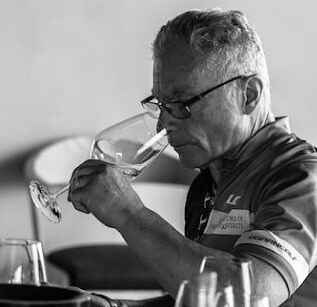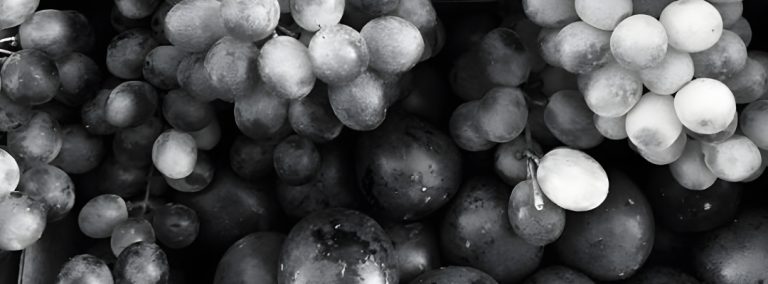If you like red wines from Italy, you may have heard of a category called Super Tuscans. A Super Tuscan is a wine from Tuscany that uses non traditional grape varieties. Whereas a Chianti Classico will be a minimum of 80% Sangiovese (these are grapes native to Tuscany), a Super Tuscan can be a blend of one or more French varietals, including Cabernet Sauvignon, Merlot, Cabernet Franc, Petit Verdot, and Syrah. Some blends have Sangiovese and/or other indigenous Tuscan grapes, but not all. You will also find wines that aren’t a blend, for example Castello di Ama L’Apparita is 100% Merlot.
A Super Tuscan is generally a stronger, fuller-bodied wine that’s highly structured and ages well. These wines tend to be big, have dark fruit flavors, and pair well with beef and other red meats. You’ll often find black cherry, blackberry and plum notes. Some also have earthy tones, including olive, minerals, iron, and herbal flavors.
Super Tuscans can be produced anywhere in Tuscany and can be fairly pricey as they’re often made in a Bordeaux style. In fact, many winemakers like to use small French oak barrels to age their wine. Expect to pay anywhere from $65 to $300 for a bottle but note you can also find smaller, less expensive wines, like Villa Pillo Borgoforte, which retails for about $15. These wines are considered Super Tuscans because any wine made in Tuscany using French varieties falls under this designation.

Where in Tuscany are they from?
Most Super Tuscan wines come from western Tuscany, in particular an area called Marema and within it, the Bolgheri region. The soil composition and climate conditions are ideal for French varietals, which have been grown here since the 1800s. The soil is a mixture of sand, clay, pebbles and silt and the vineyards are located on hillsides and in the flat valleys at the base of the hills.
History of Super Tuscans
It’s unusual to find an Italian wine that doesn’t use Italian grapes, which is why the history of how Super Tuscans came to be is so interesting. These wines can trace their roots back to 1968 when a few Tuscan producers introduced a few new wines that did not follow the DOC guidelines.
One of these was San Felice whose Chianti Classico Vigorello contained 100% Sangiovese (note the grape varieties used in this wine have since changed!). The rules in Italy at that time required there to be 10% white grapes in a wine for it to be called Chianti, but San Felice felt they could make a more powerful wine with just Sangiovese. Thus, the original bottles of Vigorello were given a Vino da Tavola classification.
Italian Wine Tip: Italy has a set of specific guidelines that govern wine production in any given area. A wine must meet the qualifications of DOC Denominazione di Origine Controllata, or the higher qualification, DOCG Denominazione di Origine Controllata e Garantita, in order to fall under a certain wine designation. If a wine doesn’t meet these specifications, it is labeled Vino da Tavola to indicate it’s a table wine.
The second wine that broke the Tuscan mold was a Sassicaia from Tenuta San Guido. Sassicaia is 85% Cabernet Sauvignon and 15% Cabernet Franc, aged in oak barrels. The winemakers here used Cabernet grapes grown in the coastal part of Bolgheri to produce a big and bold wine that did not meet the regulations to be called DOC.
Shortly following this, Piero Antinori, another early leader of the Super Tuscan category, debuted his Sangiovese-Cabernet wine, Tignanello, which also used non indigenous varieties. Antinori later released a mainly Cabernet-based wine, Solaia, and the rest is history.
What does IGT mean?
The Super Tuscan category was not officially recognized until 1994 and it now has the classification IGT, which stands for Indicazione Geografica Tipica. This category was created to accommodate wines from Italy which could not be classified under the more traditional DOC/DOCG rules. In the Tuscan region you can find wines labeled Toscana, Maremma and Bolgheri IGT.
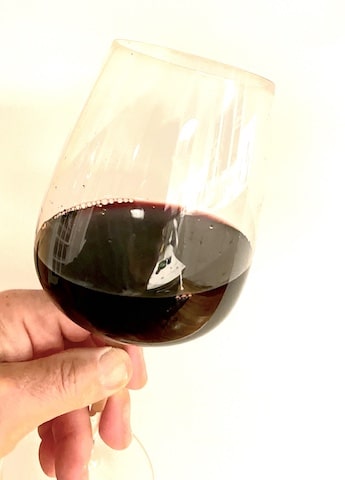
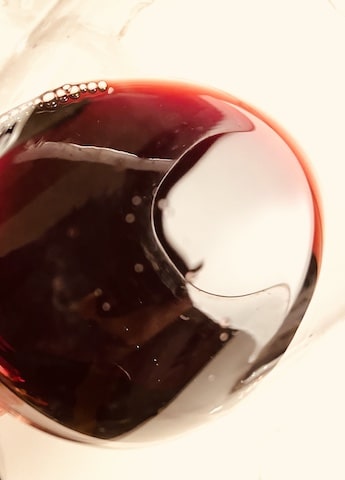
More on the non indigenous grapes in Super Tuscan blends
- Cabernet Sauvignon is a red grape from Bordeaux, France that’s actually the result of a cross between Cabernet Franc and Sauvignon Blanc. It’s more tannic than Sangiovese and has dark berry flavors.
- Merlot can have leather, cherry and plum flavors. Surprisingly, it’s the second most grown red grape in the Tuscan area and is an integral part of many Super Tuscan blends.
- Cabernet Franc is the parent grape of both Merlot and Cabernet Sauvignon. While it’s traditionally associated with France, some people believe it may have originated in the Basque area of Spain! It has flavors of red fruit including strawberry, cherry, raspberry, and some peppery notes.
- Petit Verdot is a highly tannic variety used sparingly in a typical blend to give the wines added structure and more nuanced character.
- Syrah is a variety from the northern Rhône area of France that adds more dark fruits to the flavor profile of many Super Tuscans. It has a beautiful ruby color and contributes both depth and spice.
Wine Fact: Pugnitello is an ancient grape varietal from Italy that’s also included in some Super Tuscan wine. San Felice and the University of Florence rediscovered a half acre of the grape in the 1980s and revived it on 10 acres of experimental vineyards. It’s increasingly being used in Tuscan wines these days.
How is Chianti different?
Chianti is a medium-bodied wine from Tuscany that’s not as deep in flavor or color as Bordeaux-based wines. It has a different flavor profile that leans away from dark fruit and more toward cherry and herbs. It’s also a brickish red garnet color. This wine is not as tannic as an average Super Tuscan and its higher acidity means it pairs well with traditional Italian foods, including pasta in red sauces.
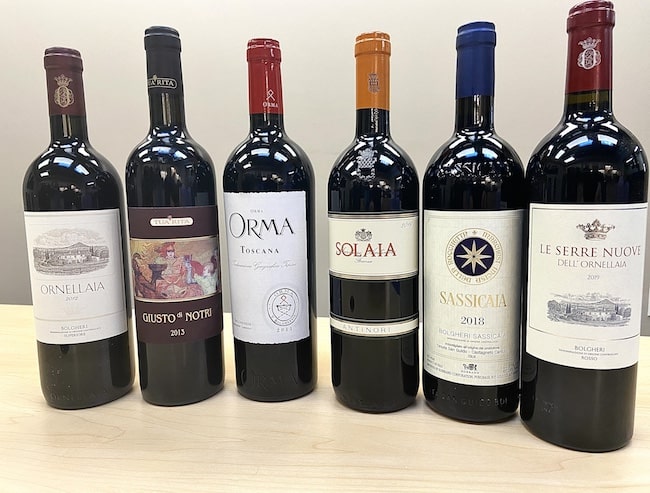
6 Famous Super Tuscan wines
- San Felice Vigorello. The laws and regulations have changed since Vigorello was first introduced, but so has the wine! Today it’s a blend of Bordeaux and Italian varietals, including Pugnitello. This wine is a great value and a perfect starting point if you want to know more about the Super Tuscan category. A bottle of Vigorello Toscana IGT will cost you around $75.
- Tenuta San Guido Sassicaia. Tenuta San Guido Sassicaia is a single estate wine that has its own DOC. It’s also one of the original Super Tuscan wines from Bolgheri. It’s a big, bold, and highly structured wine that you’ll pay upwards of $300 for.
- Antinori Solaia. Solaia is a blend of French and Italian varietals produced at one of Antinori’s wineries in the Chianti Classico region. What makes this wine unique is Solaia isn’t released every year, rather it’s only made when a vintage is of high enough quality. Because of its small production, Solaia Toscana IGT will cost you around $750 a bottle.
- Tenuta Ornellaia. From Bolgheri, Ornellaia is a full-bodied blend of Cab Sauvignon, Cab Franc and Merlot aged in oak.
- Antinori Tenuta Tignanello. In production since the late 1970s, Tignanello Toscana IGT is a blend of mostly Sangiovese with some Cab Sauvignon and Cab Franc. It’s more reasonably priced compared to some of the other Super Tuscan wines and will cost you around $175-200.
- Antinori Tenuta Guado al Tasso. This is a Super Tuscan from Antinori that’s made in the Bolgheri region. It’s a full-bodied wine that will cost you between $150 and $175.
Other notable Super Tuscan producers include Le Macchiole Messorio, and Castello di Ama who makes L’Apparita Toscana IGT, a single vineyard wine. Their winemaker, Marco Pallanti, spent many years working in Bordeaux. Isole e Olena Cepparello is a wine that’s 100% Sangiovese but we’re including it here because of its elegance and unique character. This wine ages gracefully and is a good bottle for your cellar.
How to drink a Super Tuscan
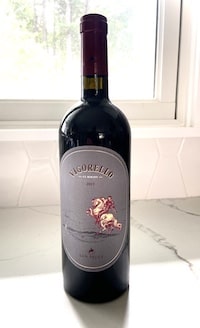
You can drink these Tuscan wines young, but you’re better off aging them for at least 5 years if you can. If you’re having a bottle with your dinner, be sure to open it at least an hour beforehand and if possible, decant the wine. The best temperature for serving is 60-65 degrees and if your wine is any warmer, you may want to chill the bottle for a bit beforehand. You should drink these wines out of Cabernet/Bordeaux style glasses. This kind of glass has a long stem with more of a straight-edge and a wider opening at the top. This helps the wine spread evenly in your mouth when you drink it.
Food wine pairings
Super Tuscans are big wines that make a perfect pairing with red meats. If you’re going out to a steakhouse, look for a Super Tuscan on the menu. Alternatively, if your local Italian restaurant has a Bistecca alla Fiorentina, this is the wine to order. It goes well with game as well, including pheasant, quail, wild boar and venison. This is because the boldness of the wine can stand up to the rich and hearty flavors in the food. Veal chop is another nice wine food pairing for a Super Tuscan. Note that while these wines go well with beef, it’s not impossible to serve them with more traditional Italian dishes in a red sauce.
Aging Super Tuscans
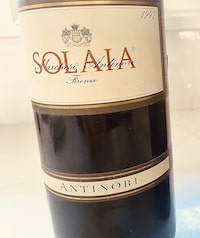
If you’re looking to buy fine wines as an investment, the better known producers of Super Tuscans make some excellent bottles to put in your cellar. A Super Tuscan wine can age for 20-25 years. They’re great wines to save for a special occasion as well. Always store wine bottles in a cool, dark and humidity controlled cellar and make sure the bottles are resting on their side.

